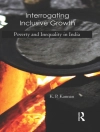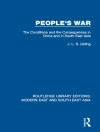Ian Stewart’s up-to-the-minute guide to the cosmos moves from the formation of the Earth and its Moon to the planets and asteroids of the solar system and from there out into the galaxy and the universe. He describes the architecture of space and time, dark matter and dark energy, how galaxies form, why stars implode, how everything began, and how it will end. He considers parallel universes, what forms extra-terrestrial life might take, and the likelihood of Earth being hit by an asteroid.
Mathematics, Professor Stewart shows, has been the driving force in astronomy and cosmology since the ancient Babylonians. He describes how Kepler’s work on planetary orbits led Newton to formulate his theory of gravity, and how two centuries later irregularities in the motion of Mars inspired Einstein’s theory of general relativity. In crystal-clear terms he explains the fundamentals of gravity, spacetime, relativity and quantum theory, and shows how they all relate to each other. Eighty years ago the discovery that the universe is expanding led to the Big Bang theory of its origins. This in turn led cosmologists to posit features such as dark matter and dark energy. But does dark matter exist? Could another scientific revolution be on the way to challenge current scientific orthodoxy? These are among the questions Ian Stewart raises in his quest through the realms of astronomy and cosmology.
O autorze
Ian Stewart is Professor Emeritus of Mathematics atthe University of Warwick and the author of the bestseller Professor Stewart’s Cabinet of Mathematical Curiosities.His recent books include Do Dice Play God?, Significant Figures, Professor Stewart’s Incredible Numbers, Seventeen Equations that Changed the World, Professor Stewart’s Casebook of Mathematical Mysteries and Calculating the Cosmos.He is a Fellow of the Royal Society.












